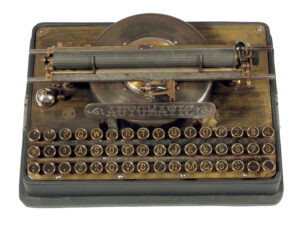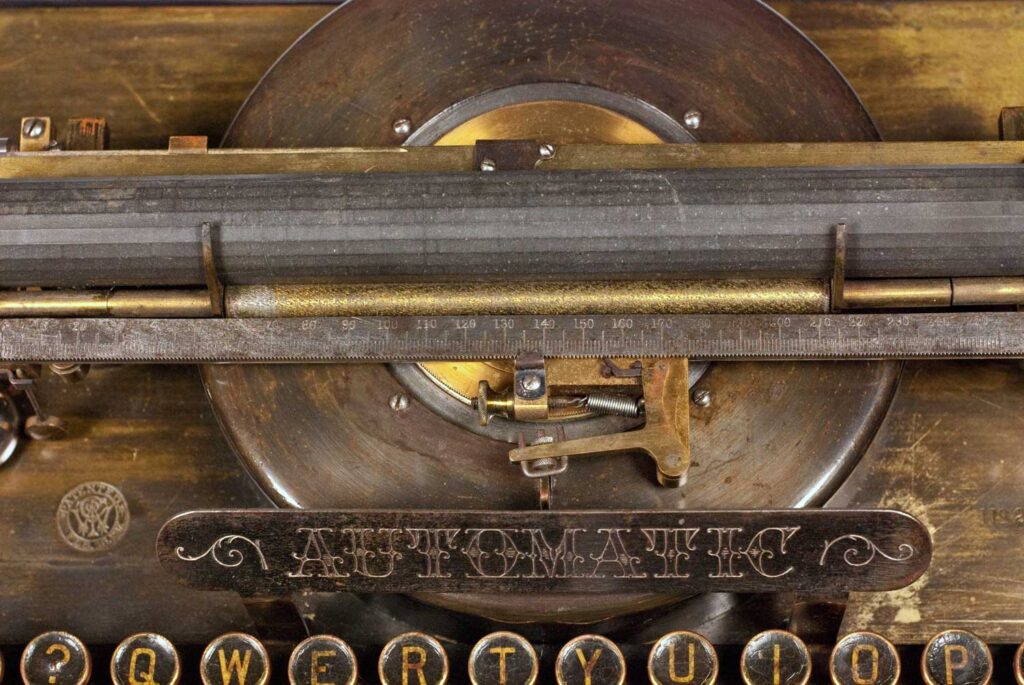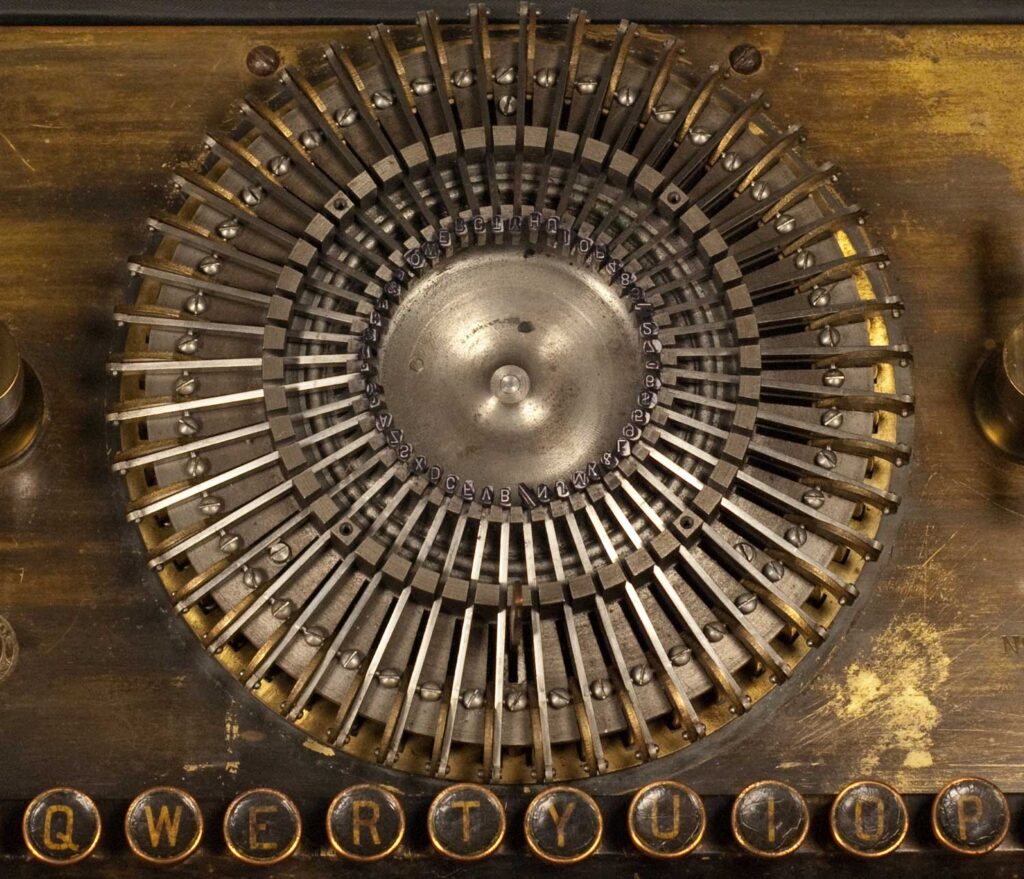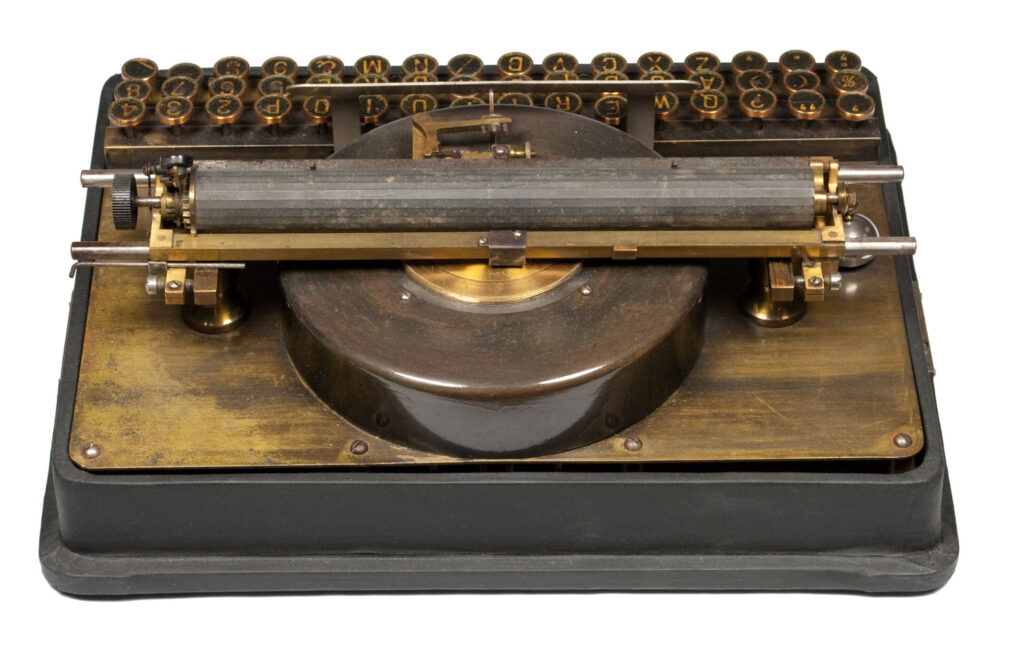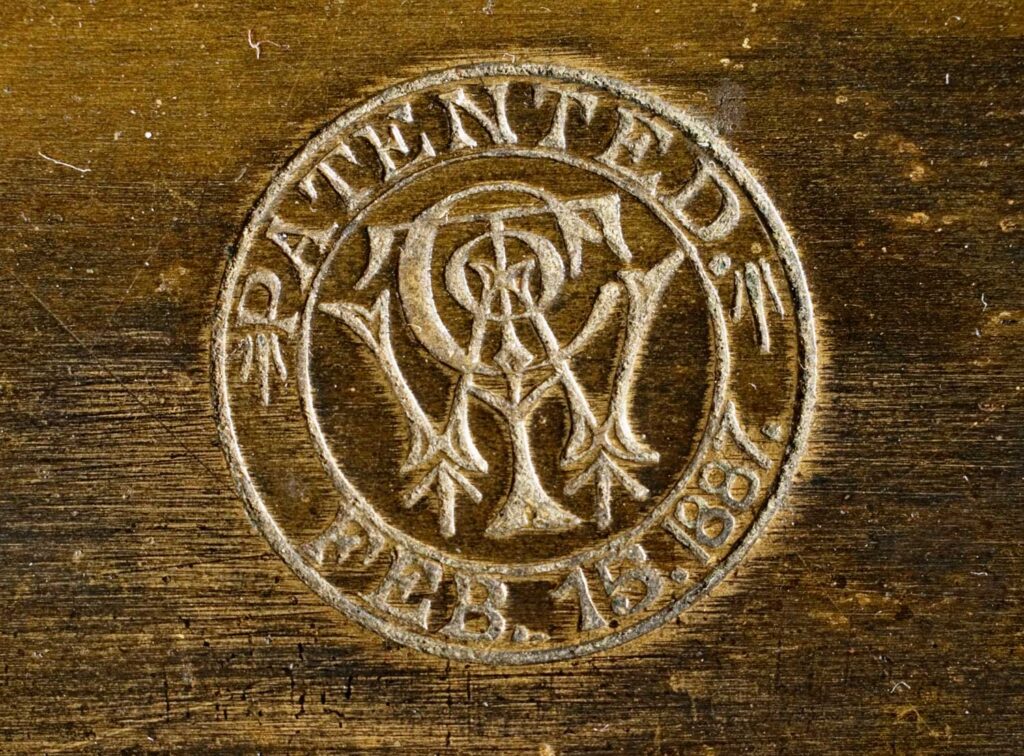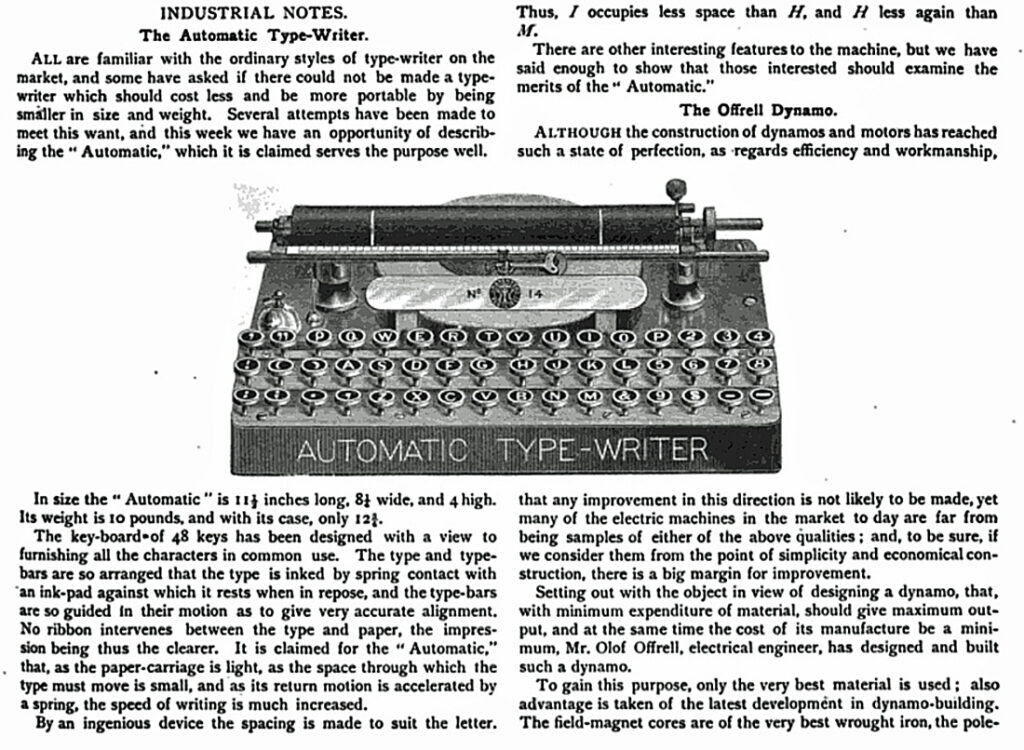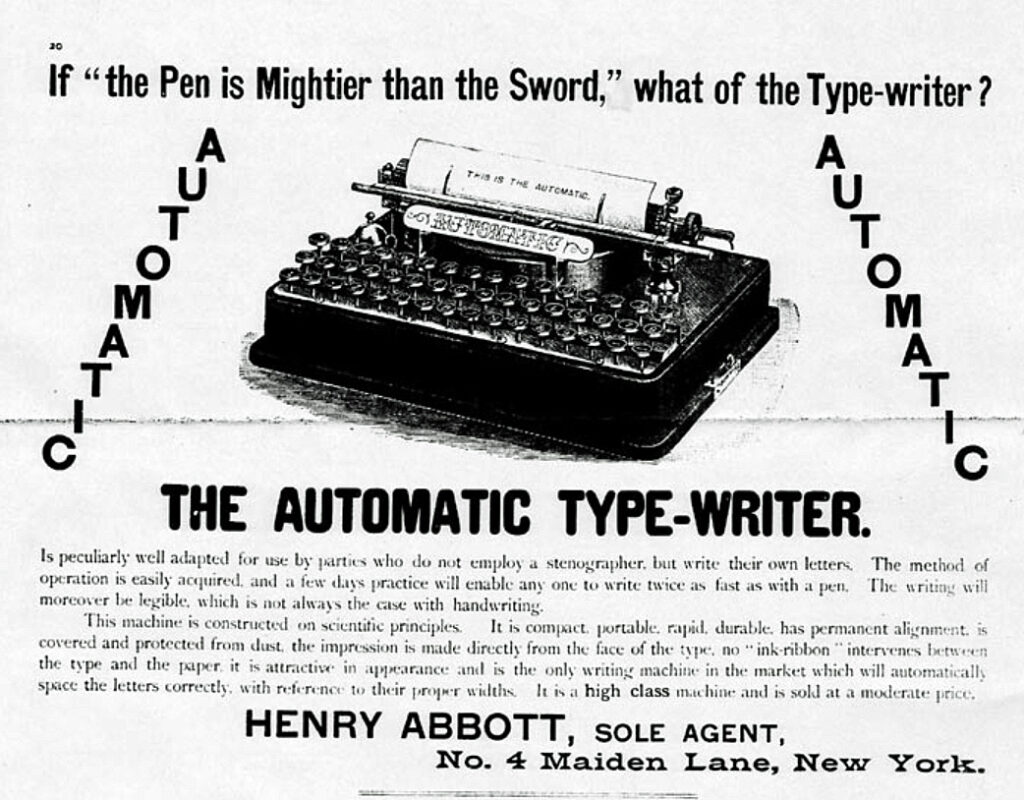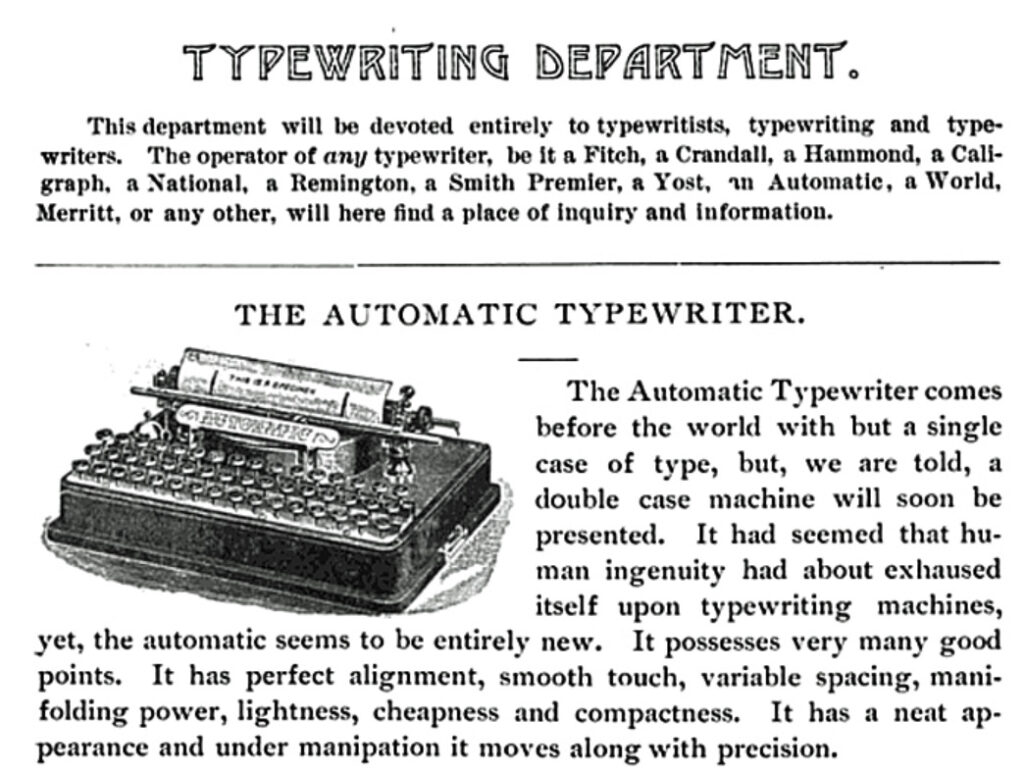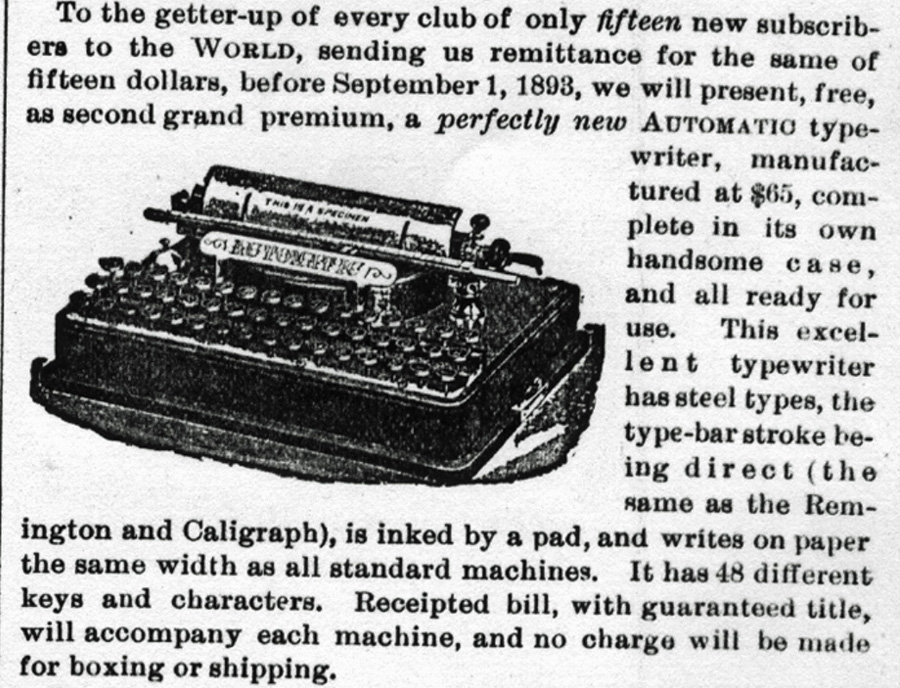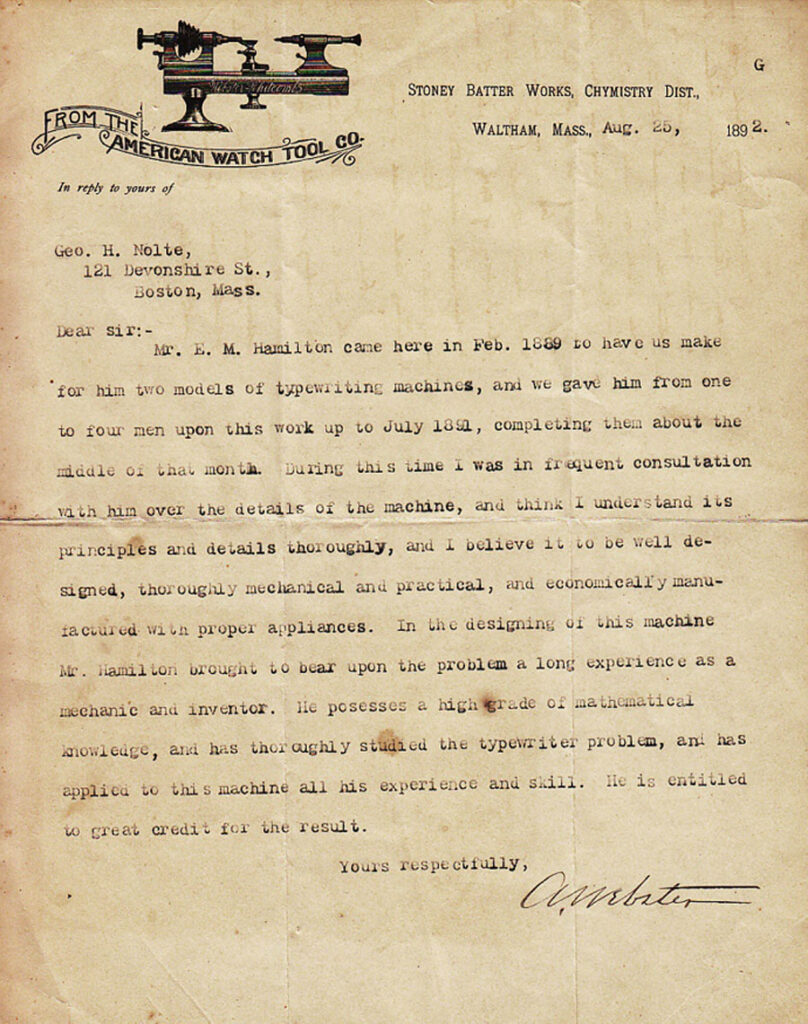‘The Amazing Automatic’ – An illustrated article
The Automatic typewriter is an exquisitely crafted machine, made predominantly of brass, with the quality and appearance of a fine scientific instrument. It is a masterpiece of 19th-century American typewriter manufacturing.
The Automatic takes its name from its use of proportional spacing, achieved through the variable movement of the carriage, which adjusts the space each character occupies on the page according to its width. As noted in the advertisement shown below, it is “… the only writing machine in the market which will automatically space the letters correctly with reference to their proper widths.” In fact, three different widths, or varying carriage movements, are used to accommodate all characters. Yet despite this mechanical ingenuity, the Automatic lacks a shift key and types only in capital letters.
The spacebar is positioned behind the keys, with the word AUTOMATIC beautifully embossed on it. No other typewriter featured its spacebar in this location and for good reason. It would have been quite awkward to move one’s fingers upward to activate the spacebar while typing.
The second image below reveals the elegant circular array of typebars with the cover removed. This rare view of the Automatic highlights the exquisite engineering behind Mr. Hamilton’s invention. With a graceful, articulated motion, the typebars swing upward to the center of the circle and strike the paper on the underside of the carriage.
The patent for the Automatic was applied for in 1884 and granted in 1887. It was manufactured for only three years, with the Automatic Typewriter Company going bankrupt in 1890. As reported in The Phonographic World, May 1892: “The Automatic was withdrawn from the market in 1891, after an expenditure of about $60,000 for its introduction, the stockholders refusing to invest further, and the factory was closed.”
The extraordinary letter shown below is a character reference for Mr. E.M. Hamilton, written in 1892 by Ambrose Webster, co-owner of the American Watch Tool Company (AWT). Webster, a skilled inventor and foreman of the machine shop, played a central role in AWT’s operations. The company, originally known as the Waltham Watch Company and later the American Watch Company, was renowned for producing precision machinery for the watch industry, most notably the Webster-Whitcomb watch lathes.
In the letter, Webster describes how Hamilton engaged AWT in 1889 to produce two typewriter models and offers high praise for his engineering abilities. Aside from Hamilton’s patent drawings, this letter appears to be a unique surviving account of his hands-on work with the Automatic typewriter.
This typewriter originally sold for $65.
“If the Pen is Mightier than the Sword, what of the type-writer?”
